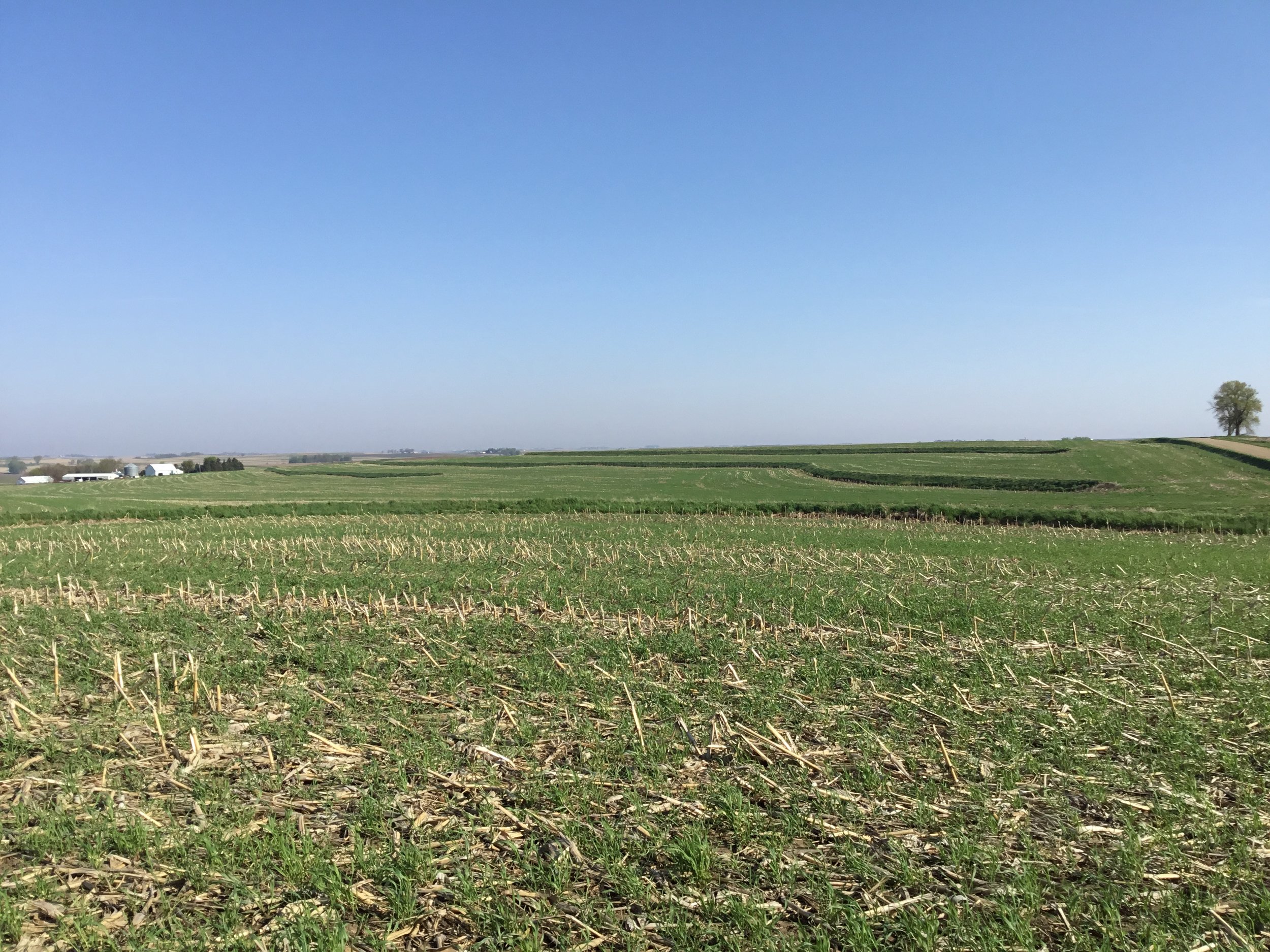Improving Water Quality and Soil Health and Not Breaking the Bank
Conservation has always been a part of Mike Schnepf’s 51-year farming lifestyle. Mike grew up near Oyens, Iowa, where he lived and worked on a farm with his father and siblings. At the time, they were raising only a corn crop to feed the cattle.
His dad was an avid conservationist and served many years as a Soil and Water Conservation District commissioner.
“Back then, no-till wasn’t around so our conservation practices were contouring and terraces; the contours were flagged out by us kids and we knew by hand signals when to go up-hill or down-hill,” Mike said.
Mike still farms, but he has changed his operation a little bit. Mike has incorporated soybeans into his rotation, and added more terraces and a waterway. He has always done minimum tillage, but for the last 10 years he has been 100 percent no-till.
“I can’t see why someone would want to spend a lot of money on all the big tillage equipment. You need a couple different pieces just to get your field ready in the spring. That’s where I am saving money: I have never plowed one furrow,” Mike said.
Mike mentioned that other producers might think he’s foolish trying all these things, but Mike wants to set an example.
“With these practices, I have been able to control my erosion and on really dry years when other farmers are complaining they need moisture,” he said.
Mike has been enrolled in the Conservation Stewardship Program with the NRCS since 2012, and in that program, he has added cover crops into the mix. For the last 3 years, Mike has drilled in a rye cover crop on 170 acres of corn and bean crop ground. For the first time this year, he will be no-till planting into the live rye and terminating it after seed germination.
When asked why he decided not to kill it first he said, “I’m testing new things, sort of like a test plot.”
The cover crops for have been successful for Mike, but there are many hoops to jump through to make sure it is planted in time and killing it in the spring. He hopes that no-till planting into the rye while it’s alive will help alleviate some of these issues.
“I haven’t seen a yield boost with the cover crops, yet, but I can tell you there hasn’t been a yield loss,” Mike said.
At the end of the day, Mike’s operation is increasing soil health and water quality, but most importantly to him, it’s saving him money.

